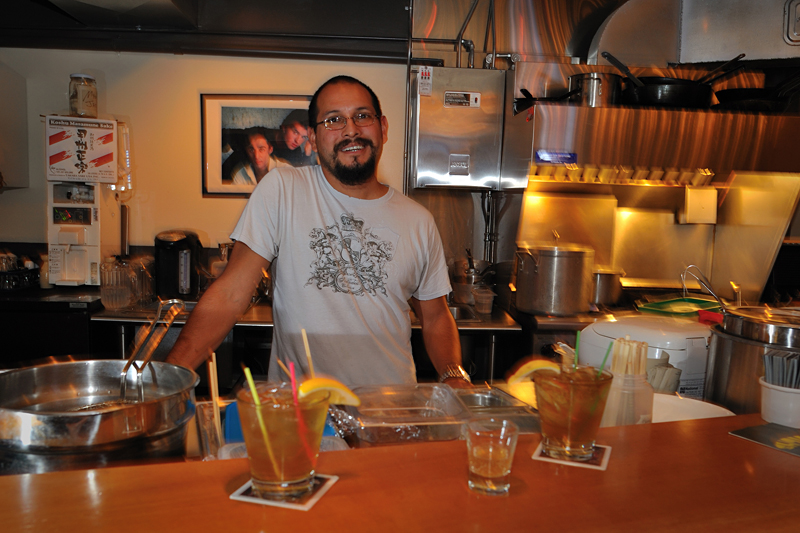Seattle City Councilmember Jean Godden remembers writing about the need to replace the Alaskan Way Viaduct back in the ’80s, when she was still a columnist at the Seattle Post-Intelligencer. Even then, she says, it wasn’t a new issue. More than 20 years later, the state legislature authorized spending $2.4 billion to replace the viaduct with a tunnel. That is, unless mayoral candidate Michael McGinn can stop it first.
The former Sierra Club chair has made pulling the plug on the tunnel the cornerstone of his campaign, arguing that it’s too much money to spend on moving cars rather than improving mass transit. Only one question in a poll his campaign conducted in May wasn’t about the tunnel, and 55 percent of the respondents said they opposed the current plan. That comes after a March 2007 advisory vote in which 70 percent of the voters rejected the tunnel option.
“Do you think they could build a tunnel in this city if the mayor and the people opposed it?” McGinn asks, assuming the answer is no.
But while the point of no return in the tunnel hasn’t technically been reached, it’s fast approaching. And one legislator says that pulling the plug at this point would not only be difficult for a new mayor, but could jeopardize the $2.4 billion commitment from Olympia to do any kind of viaduct work.
“The thought that people would go back after an effort that began in ’03 is kind of ridiculous,” says Senator Ed Murray, D-Seattle. “I think [McGinn] risks having the legislature just pull the money out.”
“Even as someone who represents Thurston County, it’s galling for me to witness how often the narcissism and personal agendas of others hold Seattle back,” adds Rep. Brendan Williams (D-Tumwater), who sits on the state legislature’s transportation committee.
But McGinn doesn’t particularly care what legislators have to say about it. “I don’t think elected officials should threaten the public when they don’t get their way,” he says.
Still, despite Olympia’s support and a contract signed by Seattle, King County, the Port, and the Governor, it’s possible, albeit unlikely, that the tunnel could still fall through. “You never say never, right?” says state Department of Transportation Viaduct Program Administrator Ron Paananen. “[But] we have some very firm direction and a very strong commitment from our elected leadership.”
The biggest obstacle to tunnel opponents like McGinn—who has found allies in city council candidates Mike O’Brien, David Bloom, and David Ginsberg—is the fact that control over viaduct replacement rests with the state. Paananen says that requests for qualifications—the point at which the state starts looking for contractors—will begin in September. But Paananen says soliciting proposals from qualified contractors won’t start until next year. The state hopes to break ground in early 2011, opening the tunnel to drivers in late 2015.
Under the agreement struck with the state, the city’s biggest responsibilities are redoing First Avenue above the tunnel and rebuilding the seawall. All told, the city is supposed to raise $930 million on its own to make such endeavors happen.
McGinn says the city entered into a contract with the state before it figured out how to raise that money. Deputy Mayor Tim Ceis says McGinn is mistaken; the city had to provide the legislature with a financing plan before Olympia would approve the final version of the tunnel. Last February, the city sent a proposal to Olympia saying that if the project was approved, it would levy a parking tax, increase utility fees, and use any federal grant or economic stimulus money earmarked for transportation on the project. Approval of these measures requires a vote of the city council, which has been on board with the tunnel thus far, having declared the tunnel its preferred option in September 2006, with only Nick Licata voting against the measure.
But city council hopeful O’Brien believes that when it comes down to a vote, city council members might be hesitant actually to ask for higher parking rates or utility fees for a tunnel that doesn’t have a lot of popular support. And if he wins his race to replace Richard McIver, Bloom gets past Sally Bagshaw in his bid to replace Jan Drago, and Ginsberg manages to unseat incumbent Richard Conlin, there will be an actual slate of opposition on the council.
But one funding source for the tunnel requires approval from people outside government, and it happens to be the biggest chunk of the city’s plan to pay for its share of the project: The city hopes to raise $300 million for the tunnel by creating a local improvement district, which basically means collecting additional taxes from property owners near the tunnel. (The precise area of this proposed district remains undefined.) At least 50 percent of the property owners in the area would have to agree to the plan.
While downtown businesses were pushing for the tunnel early on, O’Brien believes that, as with the monorail, people might be less enthusiastic for the project once it comes to paying for it. So McGinn is at least partially right in saying that the city hasn’t finalized its revenue sources.
Still, even with some uncertainty as to the city’s funding source, it’s possible for the state to move forward with the tunnel regardless of what happens in the fall elections, Paananen says.
“The pieces work best if they’re all in place,” he says. “But we can build the tunnel while some of the other pieces are implemented independently.”






